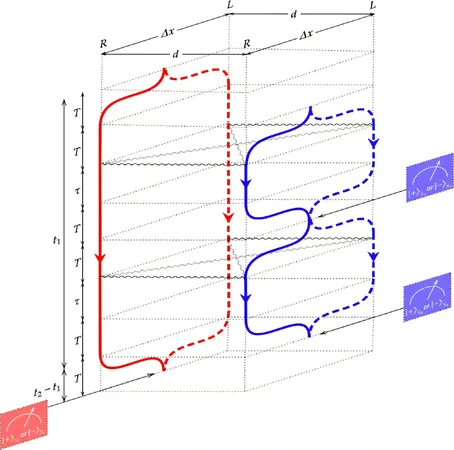
Groundbreaking Discovery Suggests New Superconductor Could Change Energy Game Forever!
2024-11-13
Author: Olivia
Introduction
A groundbreaking study led by a team from Yale University has unveiled what might be the most compelling evidence yet of a novel type of superconductor, potentially revolutionizing the field of energy transmission. This breakthrough could pave the way for harnessing superconductivity—the ability to conduct electricity without energy loss—in unprecedented ways.
Central Discovery
Central to this discovery is the corroboration of a long-standing theory in physics: the relationship between superconductivity and electronic nematicity. This phase of matter occurs when particles lose their symmetrical properties, turning their behavior directional. Researchers experimented with iron selenide crystals that were infused with sulfur, where the arrangement of iron atoms forms a grid pattern. Under normal room temperatures, electrons within these iron atoms are indifferent to the directional flow. However, as temperatures drop, they enter a "nematic" state, showing a distinct preference for moving in a specific direction.
Nematic Fluctuation
Even more intriguing is the concept of "nematic fluctuation," where electrons oscillate between their directional preferences. Despite decades of speculative research into how these fluctuations might lead to superconductivity, empirical evidence has been scarce. The current study, spearheaded by Yale’s Eduardo H. da Silva Neto, marks a significant leap in this area and provides a clearer picture of the interplay between nematicity and superconductivity.
Publication and Insights
The study was published in the esteemed journal *Nature Physics*. "We embarked on this research propelled by the idea that something remarkable was occurring within certain iron selenide materials mixed with sulfur," explained da Silva Neto, an assistant professor of physics at Yale who also serves on the Energy Sciences Institute at Yale’s West Campus.
Material Composition
The unique composition of these materials provides an advantage—they exhibit both nematic order and superconductivity without the complications of magnetism interfering with results. "This allows us to isolate magnetism from our analysis," da Silva Neto added, emphasizing the significance of the clarity this brings to their study.
Research Methodology
Achieving the results, however, was no small feat. The research team meticulously cooled iron-based materials to below 500 millikelvins over several days. Employing advanced imaging technology known as scanning tunneling microscopy (STM), they scrutinized the quantum states of electrons at an atomic level.
Key Findings
By zeroing in on iron selenides exhibiting maximum nematic fluctuations, the researchers aimed to identify a "superconducting gap," a crucial indicator of superconductivity's presence and intensity. Their STM analysis revealed a well-defined gap directly linked to superconductivity driven by electronic nematicity, a finding that had previously been frustratingly elusive due to the technical challenges of low-temperature measurements.
Future Directions
"The next phase of our research involves examining how varying the sulfur content impacts superconductivity,” da Silva Neto shared. “We aim to answer pivotal questions: Will superconductivity diminish? Will magnetic spin fluctuations reemerge?" The promise of this research opens a pathway towards more efficient energy usage and could have far-reaching implications for technology and industry.
Collaborative Effort
Co-lead authors of the study include Yale graduate students Pranab Kumar Nag and Kirsty Scott, alongside a talented team of researchers from institutions such as the University of California, Davis, the University of Minnesota, as well as Brazilian universities like Universidade Federal de Goiás and the University of Campinas. Their collective efforts signal a promising future where superconductivity might play a crucial role in our energy landscape, potentially transforming everything from power grids to transportation efficiency.









 Brasil (PT)
Brasil (PT)
 Canada (EN)
Canada (EN)
 Chile (ES)
Chile (ES)
 España (ES)
España (ES)
 France (FR)
France (FR)
 Hong Kong (EN)
Hong Kong (EN)
 Italia (IT)
Italia (IT)
 日本 (JA)
日本 (JA)
 Magyarország (HU)
Magyarország (HU)
 Norge (NO)
Norge (NO)
 Polska (PL)
Polska (PL)
 Schweiz (DE)
Schweiz (DE)
 Singapore (EN)
Singapore (EN)
 Sverige (SV)
Sverige (SV)
 Suomi (FI)
Suomi (FI)
 Türkiye (TR)
Türkiye (TR)